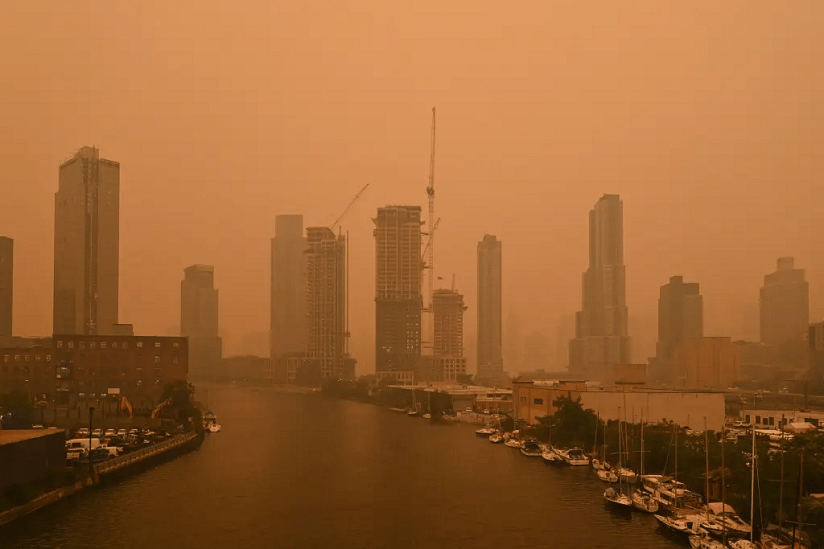In Short : Despite the escalating climate threats, many developing countries continue to face challenges in securing adequate funding to prepare for and mitigate the impacts of climate change. This financial gap hampers their ability to implement necessary adaptation measures, leaving vulnerable communities at risk. The insufficient funding underscores the urgent need for increased international support, innovative financing mechanisms, and enhanced collaboration to help vulnerable nations build resilience and cope with the escalating challenges posed by climate change. Addressing this issue is crucial for global climate resilience and sustainable development efforts.
In Detail : The world is facing more extreme weather that scientists say is fueled by human-driven climate change. The poorest countries have done the least to cause the problem, but they are being hit the hardest by more intense droughts and floods and storms. Yet as the threats from a warming planet grow, the United Nations says in a new report that less money is being sent to developing countries to help them adapt.
Developing countries, which have less wealth than developed countries like the United States, were promised $100 billion a year from their richer neighbors to help pay for cutting climate pollution and coping with the impacts of rising temperatures. Developed countries didn’t deliver on their pledge. In 2021, they actually gave poorer nations 15% less money for climate adaptation than they did the year before. That meant less money for things like flood defenses, drought-resistant crops and early warning systems to help people evacuate emergencies.
The UN estimates the gap between how much money developing countries need to pay for adaptation projects, and the amount of public funding they’re getting directly from wealthier countries and from institutions like the World Bank now stands at between $194 billion and $366 billion every year. Put another way, poorer countries need at least 10 times more money for climate adaptation than the $21.3 billion in public funding that they received in 2021.
The longer that gap persists and countries are forced to put off investments that could help blunt the impact of climate change, the more damage they’re going to suffer. That reality led to the creation of a “loss and damage” fund at last year’s annual UN climate negotiations, and the talks at COP28 later this year in the United Arab Emirates will focus on how to get the fund up and running.
“People do want to adapt, do see climate change coming, do know what to do — but there’s no finance available to actually do it,” says Pieter Pauw, a researcher at Eindhoven University of Technology in the Netherlands who was one of the authors of the UN report.
“So, we’ll see things like we saw last year in Pakistan, where almost a third of the country was flooded,” Pauw says, “partly because people are not adapted to climate change.”
The flooding in Pakistan last summer killed at least 1,700 people and caused an estimated $14.9 billion in damage. Climate change makes heavy rain more common, because a hotter atmosphere can hold more moisture.
The UN released its report on climate funding days after an international group of scientists said countries probably won’t hit a target they set to limit global warming to 1.5 degrees Celsius compared to average temperatures in the late 1800s.
Beyond that point, scientists say it is more likely that the world will suffer catastrophic climate impacts, like mass extinctions and a significant rise in sea levels. Earth’s average temperature over the past decade was about 1.1 degrees Celsius higher than pre-industrial temperatures.
Global warming is “hitting some of these developing countries already quite hard,” says Paul Watkiss, a climate change consultant and another author of the UN funding report. “By not providing adaptation finance, or countries not being able to put sufficient resources to do adaptation, it means it’s impacting [their] development.”
It isn’t clear if the funding gap can be quickly filled. Developed countries previously said they would at least double their adaptation funding to around $40 billion annually by 2025. That’s still just a fraction of what developing nations need.
While countries have another year to set new targets for climate finance, the UAE, which is hosting this year’s UN climate summit, seems to be making the issue a priority, says Adrianna Hardaway, senior policy advisory for climate at Mercy Corps, a humanitarian group.
“I think that perhaps compared to previous years, we are seeing more attention dedicated to the fact that not only is there not enough climate finance, but that it’s really not reaching the people and the places that it has to go most,” Hardaway says.
Researchers say companies have also shown more interest in helping to make poorer countries more resilient to climate change, in part to protect their own supply chains. Efforts are also underway to get more climate funding to developing countries by changing how institutions like the World Bank and International Monetary Fund operate.
“We’ve done the least to cause this problem, but it’s still us who stands to suffer the most,” says Wanjira Mathai, managing director of Africa and global partnerships at the World Resources Institute. “And so we have to put in place — quickly and swiftly — all of the adaptation strategies that we can and focus on making sure that we build resilience against the immediate danger of climate change.”

